This step by step diy project is about 16×20 lean to patio cover plans. This lean to has a 1.5:12 pitch and it can be both used as a carport or as a patio cover. If you want the second option, you can add some railings to the sides / front and you’ll get yourself a beautiful porch. Premium Plans also available in the Shop. Take a look over the rest of my woodworking plans, if you want to get more building inspiration.
If you’re dreaming of a versatile haven that seamlessly combines comfort, style, and functionality, you’re in the right place. In this comprehensive article, I’ll provide you with expert tips, step-by-step instructions, and inspiring ideas to maximize the potential of your patio cover. Whether you’re envisioning an elegant dining area for hosting memorable gatherings, a cozy lounge retreat for unwinding with loved ones, or a multifunctional oasis that adapts to your every need, we’ve got you covered. Get ready to embark on an exciting journey that will empower you to create a stunning outdoor sanctuary where your imagination can truly take flight!
When buying the lumber, you should select the planks with great care, making sure they are straight and without any visible flaws (cracks, knots, twists, decay). Investing in cedar or other weather resistant lumber is a good idea, as it will pay off on the long run. Use a spirit level to plumb and align the components, before inserting the galvanized screws, otherwise the project won’t have a symmetrical look. If you have all the materials and tools required for the project, you could get the job done in about a day.
Projects made from these plans
16×20 Lean to Patio Cover – PDF Download
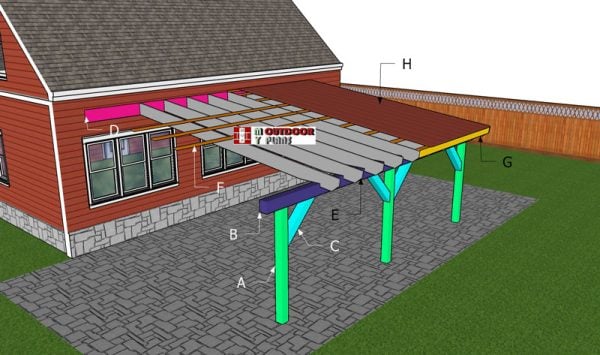
Building-a-16×20-patio-cover
Cut & Shopping List
A – 3 pieces of 6×6 lumber – 74 3/4 long POSTS
B – 2 pieces of 6×8 lumber – 132” long TOP BEAMS
C – 4 pieces of 6×6 lumber – 3 ft long BRACES
D – 1 piece of 2×10 lumber – 12 ft long, 1 piece – 10 ft long LEDGER BOARD
E – 12 pieces of 2×10 lumber – 206 1/2″ long RAFTERS
F – 10 pieces of 1×4 lumber – 12 ft long, 10 pieces – 10 ft long PURLINS
G – 1 piece of 1×6 lumber – 12 ft long, 3 pieces – 10 ft long, 2 pieces – 89” long TRIMS
Tools
![]() Hammer, Tape measure, Framing square, Level
Hammer, Tape measure, Framing square, Level
![]() Miter saw, Drill machinery, Screwdriver, Sander
Miter saw, Drill machinery, Screwdriver, Sander
![]() Concrete mixer, Post hole digger
Concrete mixer, Post hole digger
Time
Related
Building an attached carport – 16×20 DIY Plans
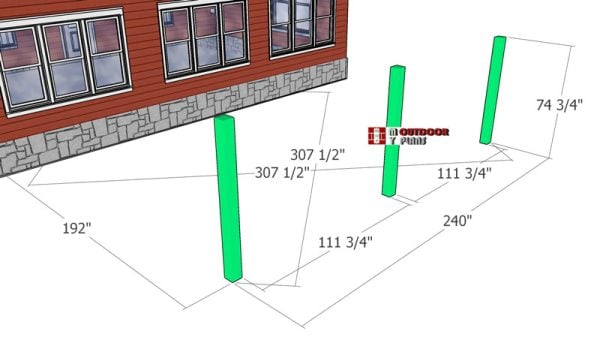
Laying-out-the-posts
The first step of the project is to set the 6×6 posts for the wooden attached carport. Use batter boards and string to layout the posts for the 16×16 carport.

Anchoring the posts of the anchor
You can set the posts in concrete or you can pour 3′ deep footings and use posts anchors. Considering this is a light outdoor project, you can set the posts to anchors. That is why, these plans are designed having that assumption in mind (concrete anchors).
Dig the holes and set the 14″ tube forms. Fill the tubes with concrete and set the post anchors. Make sure you let the concrete to dry out for a few day, before installing the posts into place. Use temporarily braces to secure the posts until you attach the plates.
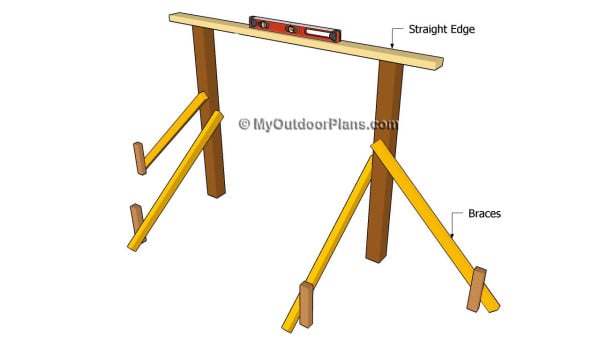
Installing the posts
Use a laser level / water level to make sure the top of the posts are at the same level.
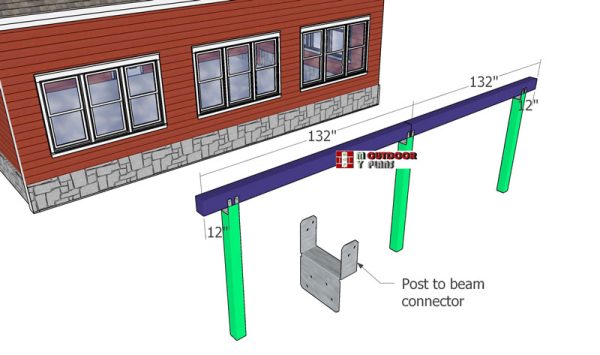
Fitting-the-top-support-beams
Continue the project by attaching the support beam to the top of the posts. See the 12″ overhangs on the sides. Plumb the posts and make sure the beams are horizontal. Use post to beam connectors to secure the beams to the top of the posts. Insert 1 1/2″ structural screws to lock the connectors into place.
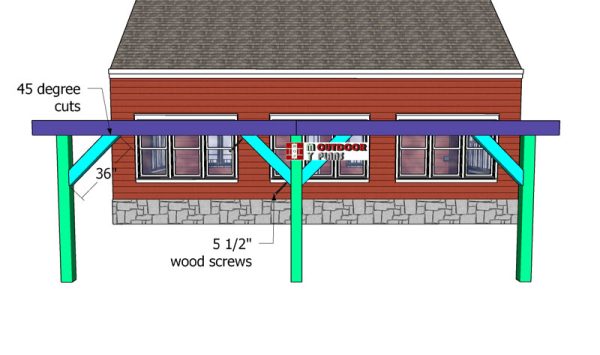
Fitting-the-braces
Use 6×6 lumber for the braces. Make 45 degree cuts at both ends of the braces and then secure them into place with 5 1/2″ screws (at least 2 screws for joint).
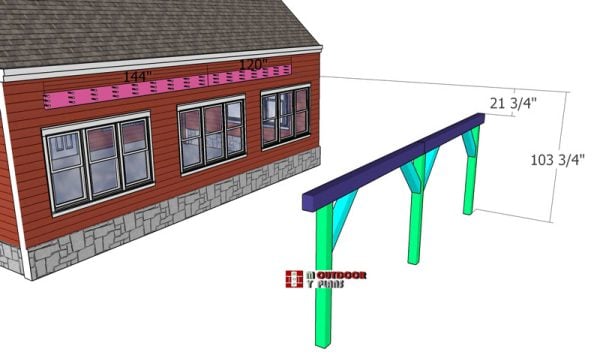
Fitting-the-ledger-boards
Next, we need to attach the 2×10 ledger to the house. Make sure you set the 2×10 ledger directly into the framing structure with 4 1/2″ lag screws with washers (or longer, depending to the house structure). Use a spirit level to check if the ledger is horizontal.
Drill pilot holes and insert the screws to lock it into place tightly (see your local codes for more info on how to secure the ledger). Insert 3 screws into each stud.
Building the lean to roof
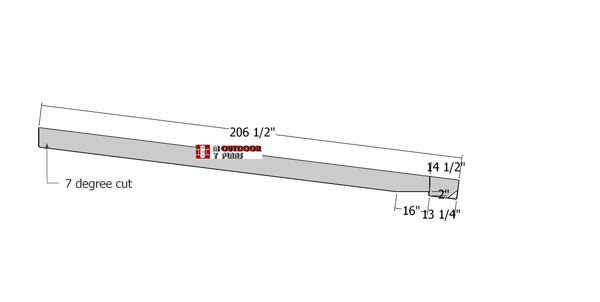
Rafters-for-16×16-lean-to
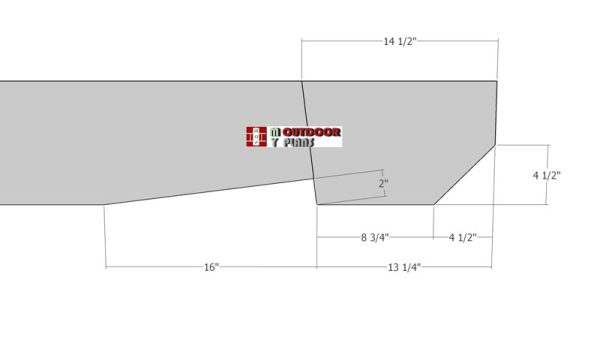
Rafter-end-cuts
Use 2×10 lumber for the rafters. Make a 7 degree cut to one end of the rafters. Mark the cut lines on the beams and then get the job done with a circular saw. Smooth the edges with sandpaper.
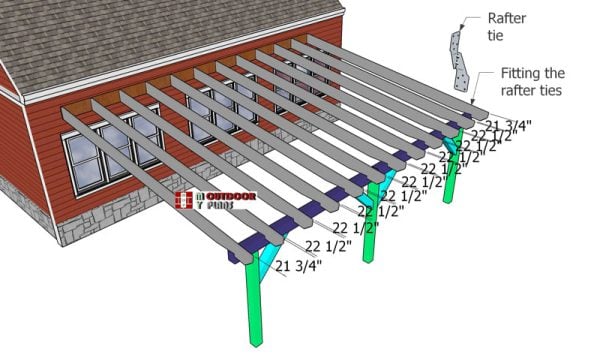
Setting-the-rafters

Fitting-the-hangers
Fit the rafters to the attached carport, every 24″ on center. Fit the rafters to the ledger beams using rafter hangers and 1 1/2″ structural screws. Use rafter ties and 1 1/2″ structural screws to lock the rafters to the support beams.
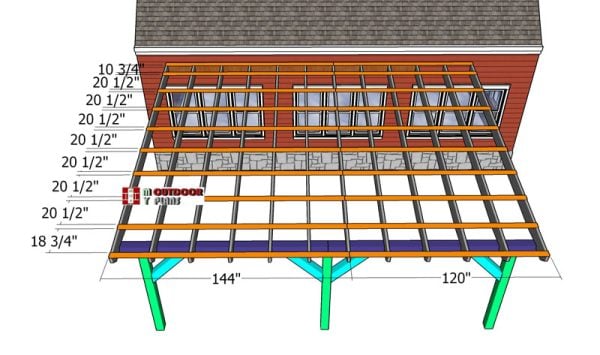
Fitting-the-purlins
Fit the 1×4 purlins to the top of the patio cover. Place the purlins every 24″ on center and secure them to the rafters with 2 1/2″ screws. We need these purlins so we can install the metal roofing sheets.
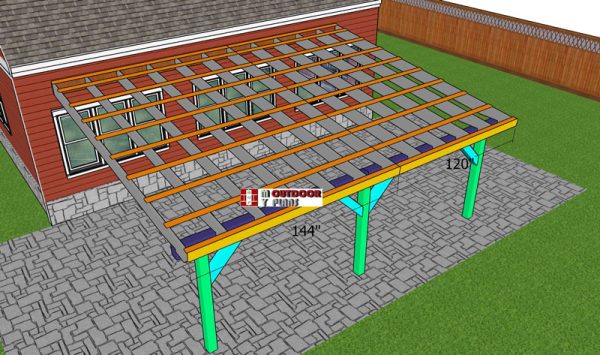
Front-trims
Use 1×6 lumber for the roof trims. Align the edges flush and insert 2″ nails to lock them into place.
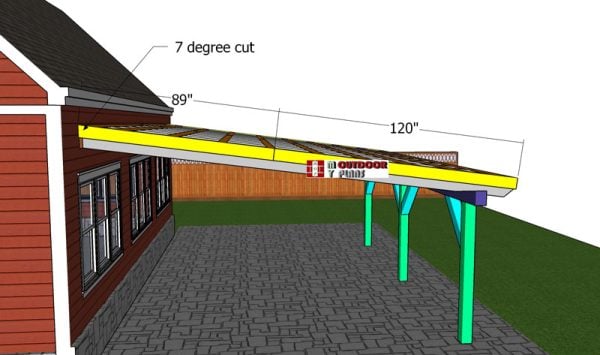
Side-trims
Cut and fit the trims to the sides of the carport. See the 7 degree cut to one end.

Installing-the-roof-flashing
In addition, install a flashing at the intersection of the roof to the wall. The flashing will waterproof the joint and prevent water leaks. Make sure you ask directions from the roof manufacturer, so you use the best solution to seal the wall to roof joint (see if it’s installed under or over the roof sheets).
Start by measuring the area where the flashing will be installed and cut the metal flashing to the appropriate size using tin snips or a metal cutting tool. Clean the surface where the flashing will be attached and ensure it is dry and free of debris. Apply a layer of construction adhesive to the back of the flashing and press it firmly against the wall, aligning it with the desired position. Secure the flashing in place with galvanized nails or screws, ensuring they are evenly spaced and driven flush with the surface.
Finally, inspect the installation for any gaps or loose sections, making any necessary adjustments. With careful attention to detail and adherence to safety precautions, you’ll successfully install metal wall flashing to provide protection and enhance the durability of your walls.
Finishing touches
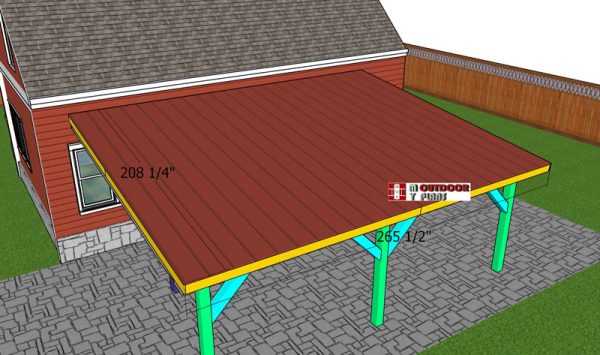
Fitting-the-roofing
Installing metal roof sheets as a beginner involves several important steps. First, prepare the roof surface by ensuring it is clean and free of any debris. It’s also necessary to install an underlayment to provide a moisture barrier and improve insulation. Next, accurately measure and cut the metal sheets to fit the roof dimensions using tin snips or a metal cutting tool.
When attaching the sheets, start at one corner of the roof and align the first sheet with the edge. Secure it using roofing screws with rubber washers, spacing them appropriately along the edges and center.
Repeat this process for the remaining sheets, overlapping each one by about 2 inches to ensure proper water drainage. Finally, carefully inspect the installation for any loose screws or gaps, making any necessary adjustments. It’s crucial to prioritize safety by following guidelines, wearing protective gear, and seeking professional help if needed.
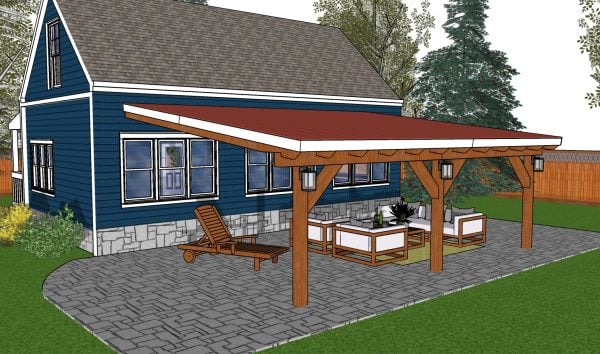
16×20 Attached Carport MOP
Last but not last, you need to take care of the finishing touches. Fill the holes with wood putty and let it dry for several hours. Smooth the surface with 120-220 grit sandpaper and apply a few coats of stain to enhance the natural look of lumber and to protect the components from the elements.
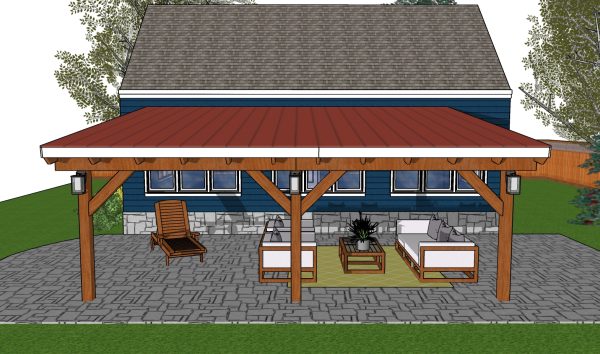
16×20 Attached Carport front view
To make the most of a large patio cover, you can create a versatile outdoor living space that accommodates various activities. Start by incorporating comfortable seating areas, such as a dining set for al fresco meals and a lounge area for relaxation. Utilize the space to its fullest potential by adding outdoor furniture with storage options to keep items organized.
Consider integrating shade solutions like retractable awnings or sunshades to control sunlight and temperature. Enhance the ambiance by incorporating lighting fixtures for evening use and incorporating greenery with potted plants or vertical gardens.
Lastly, personalize the space with decorative elements such as rugs, cushions, and outdoor accessories to create a welcoming and enjoyable atmosphere for outdoor gatherings, entertaining, and leisure activities.
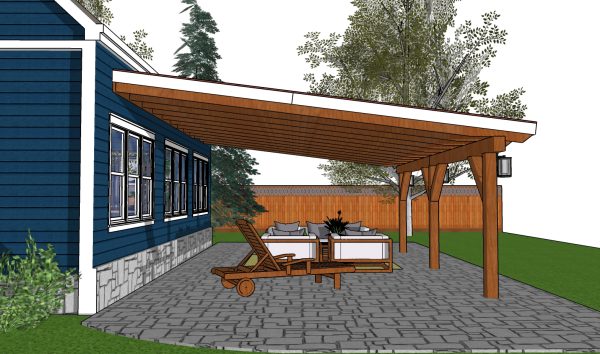
16×20 Attached Carport side view
This project can be built in less than one week and it can also be used as a patio cover. I recommend you to read the local building codes before starting the project, so you make sure you comply with the local building codes.
If you build this carport attached to the double garage, you will have a nice shaded area that will be perfect for a car or for woodworking outside. If you want to get the Premium Plans, see the GET PDF PLANS button bellow.
This woodworking project was about 16×20 attached patio cover plans free. If you want to see more outdoor plans, check out the rest of our step by step projects and follow the instructions to obtain a professional result.






1 comment
Hello I’m looking for plans for a 20×20 attached patio cover. All I keep seeing are 16×20 is it possible to create a 20×20 set of plans with 3 6×6 posts at end and 2 6×6 post at 10’ left and right? How much would that plan cost?